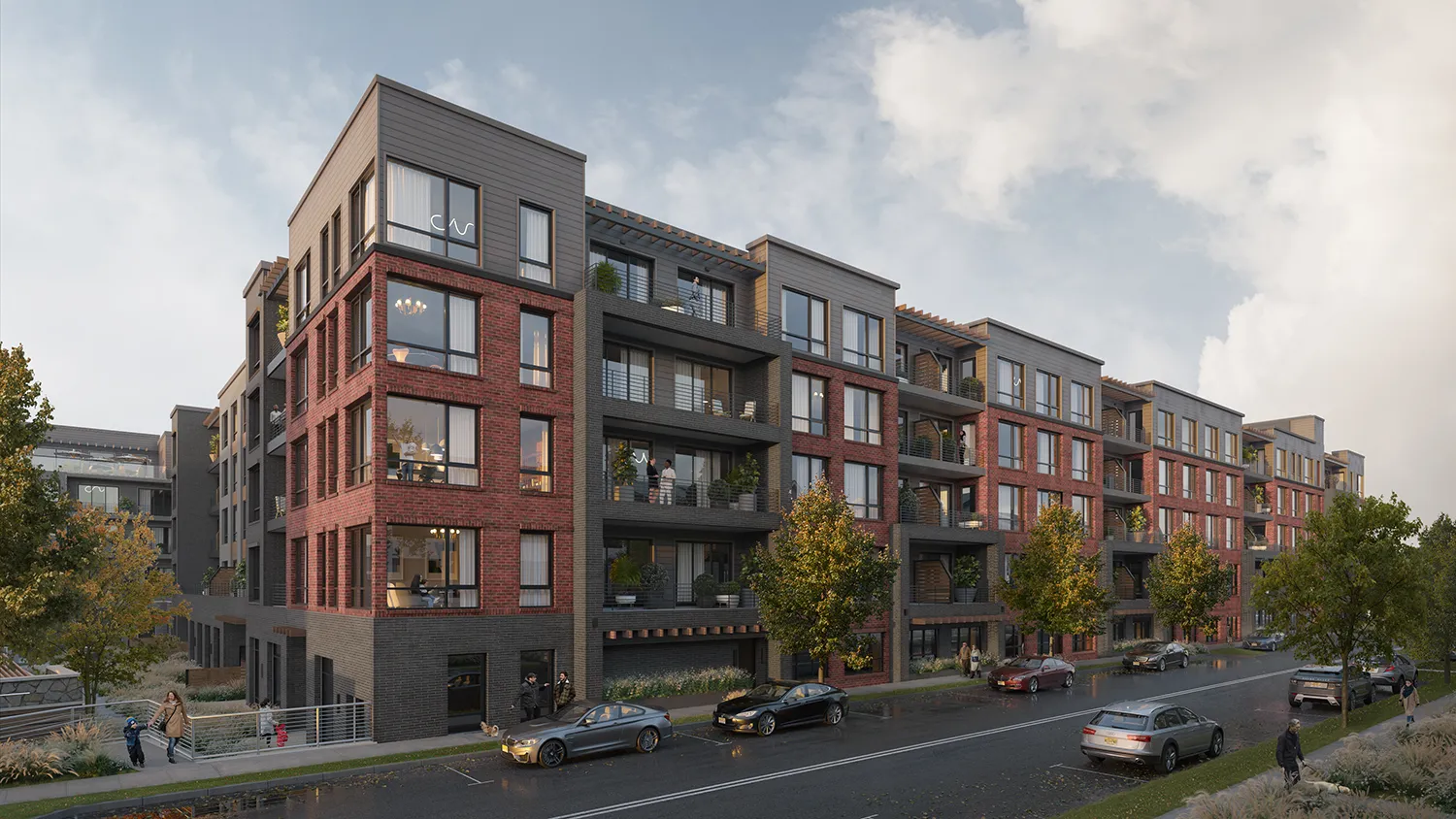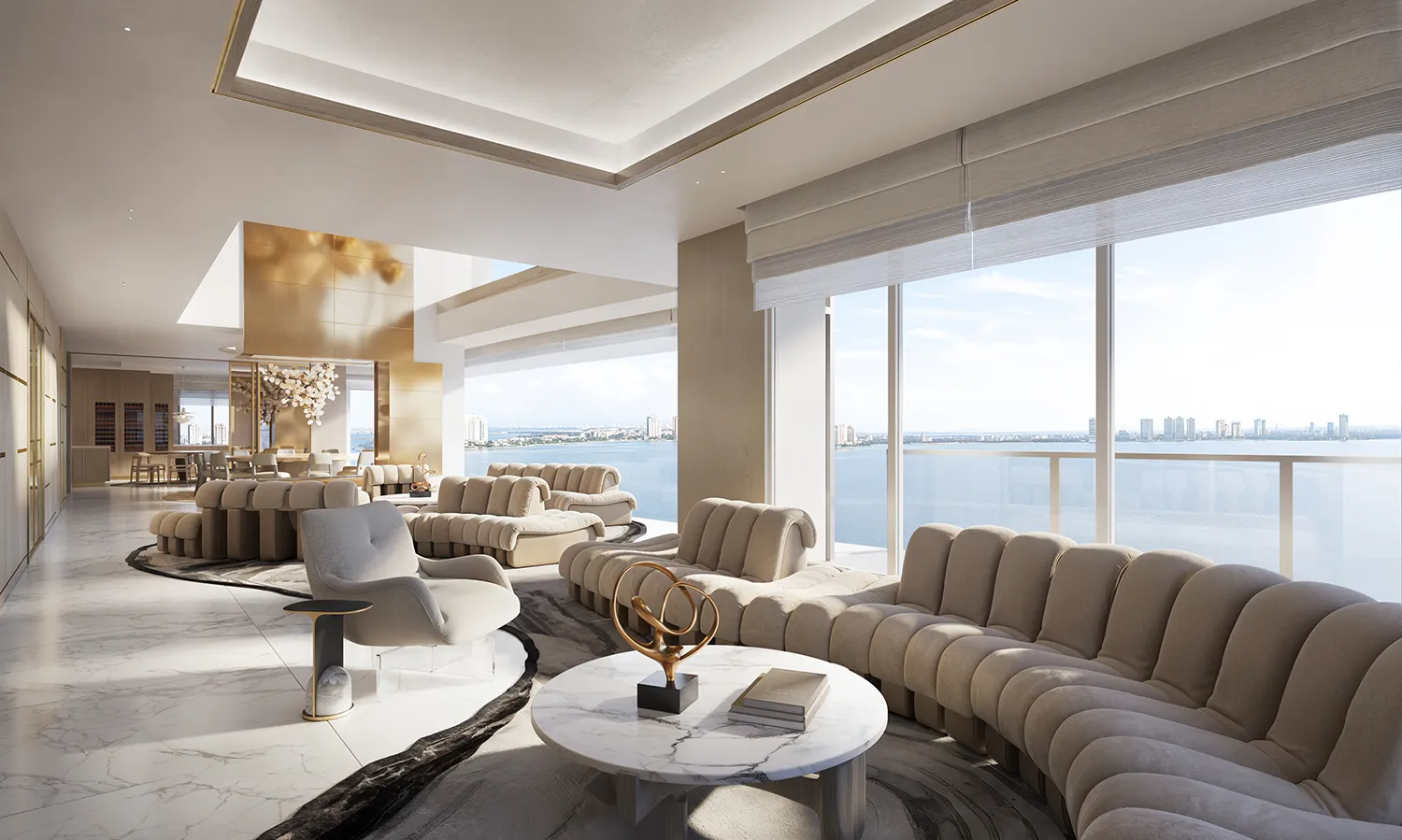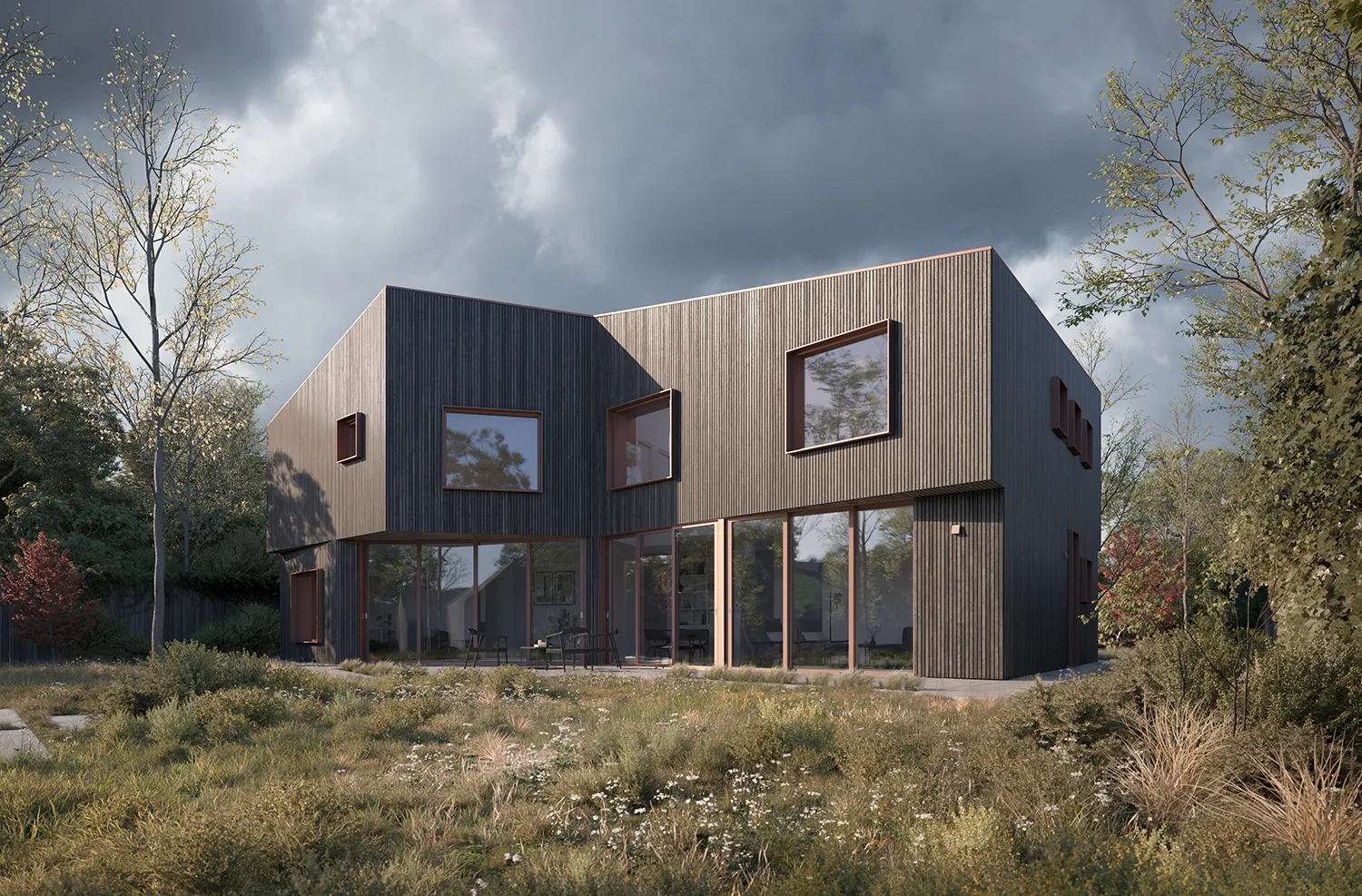How can you explain that changes to the lobby layout aren’t just a designer’s whim, but a response to the flow scheme? What should you show the city commission when they ask to “feel the scale of the building from a pedestrian’s point of view”? How do you convey that a material behaves differently in soft morning light versus artificial evening illumination?
For architects, designers, and developers, questions like these often come up during public presentations and day-to-day project reviews—moments when words and drawings alone aren’t enough. In this article, we unpack the benefits of 3D visualization through real-world scenarios where it evolves from a supporting asset into a key driver of design clarity and decision-making.

Enhanced Communication and Deeper Understanding
3D visualization enhances communication by making design intent clear and accessible to both technical and non-technical audiences. It enables deeper understanding by providing a shared spatial framework for evaluating form, proportion, material behavior, and light.
Various types of visual output contribute differently to coordination, clarity, and timing at critical phases of the project lifecycle. Various types of visual output contribute differently to coordination, clarity, and timing at critical phases of the project lifecycle, including detailed 3D industrial renderings.
Clearer Communication Through Realistic 3D Renderings
High-quality 3D renderings make project proposals easier to read and evaluate at early stages. Materials, lighting conditions, and spatial depth are presented with enough accuracy to support informed discussion even outside the project team.
This approach was used by the Tampa Bay Regional Planning Council in collaboration with InCitu, an AR startup working at the intersection of urban planning and civic technology. In response to growing climate risks and the need for public engagement, they visualized new stormwater infrastructure directly in the physical environment using augmented reality. Over 250,000 residents explored the future streetscape by experiencing full-scale proposals on-site. As a result, the project received clearer input from the public and more focused engagement from local authorities.
Reducing Misunderstandings in Design with Interactive 3D Models
Interactive 3D models reduce misalignment by allowing key design parameters to be tested spatially rather than interpreted abstractly. They enable early validation of geometry, programmatic relationships, and user flows in a fully navigable environment.
Interactive 3D models significantly reduce design misalignment by allowing key parameters to be explored spatially rather than interpreted abstractly. Designers and stakeholders can validate geometry, programmatic relationships, and user flows early in the process within a fully navigable environment.
This fosters clearer coordination across disciplines and helps identify potential spatial, technical, or experiential conflicts before they affect construction documentation or incur added costs. For instance, incorporating BIM (Building Information Modeling) in construction projects has been shown to reduce design errors at early stages, cutting rework by up to 40%.
Better Client Engagement Using Virtual Staging and Interior Visualization
Interior visualization and virtual staging add value across many project types. Still, they are especially required in luxury developments such as branded residences, penthouses, and flagship commercial interiors, where design decisions involve complex material palettes, multi-layer lighting strategies, integrated systems, and particular client expectations. These conditions require precise coordination and a clear visual representation long before procurement.
The benefits of 3D visualization include clear communication of spatial structure, surface behavior, and lighting performance—delivered with the level of detail necessary for executive and stakeholder approval. Renderings such as this 3D Bathroom Rendering, Living Room 3D Rendering, and 3D Hotel Rendering allow project teams to align on proportion, materiality, and atmosphere early in the process—reducing ambiguity and minimizing revisions.

Virtual staging in residential development enables the same unit to be presented in multiple interior styles, allowing clients to see how a space can reflect different preferences and lifestyle profiles. In commercial projects, it supports functional flexibility—illustrating, for example, how a lounge can serve as a catering venue or be reconfigured for conferences, meetings, or private events. This accelerates informed decision-making among investors, operators, and potential buyers, without the cost and logistical constraints of physical staging.
Research supports this impact: according to the National Association of Realtors (NAR),
- 83% of buyers’ agents said staging a home made it easier for buyers to visualize the property as a future home.
- 26% reported that staging influenced most buyers’ perception of the property.
- And 17% said that staged homes increased the dollar value offered by between 1% and 5% compared to similar unstaged homes.
These findings underscore the value of staging as a powerful tool for enhancing buyer engagement and perceived property value. Find out which virtual staging solution is right for your project and how much it could cost.
The Role of 3D Graphics in Marketing and Presentation Materials
In pre-sales and leasing campaigns, visual assets often carry the full weight of the narrative long before the physical space exists. 3D walkthrough animation and 360-degree tours help define how a project is perceived by future users, brokers, investors, and the wider market.
This approach was effectively applied by JLL, a global real estate services firm, in the marketing of a waterfront commercial property. Silicon Heartland Innovation Park (SHIP), a large-scale industrial development in New Albany, Ohio, was entirely new to the market, and the team focused on building a clear, narrative-driven pitch supported by 3D animations, detailed mapping, and brand assets tailored to a tech-forward audience. Combined with direct outreach to brokers, public officials, and corporate tenants, the campaign helped articulate the value of the site without relying on physical access. The result: both speculative buildings were fully leased, and 60 acres of land were sold at a record price.
This outcome reflects a broader shift in how firms approach positioning. In SHIP’s case, 3D Rendering for Marketing structured the pitch and delivered the outcome.
Cost Reduction and Time Efficiency in Project Development
Integrated 3D visualization workflows reduce financial, operational, and legal overhead across all phases of design and delivery. By replacing physical prototyping, accelerating iteration cycles, and surfacing errors prior to documentation, these tools compress schedules and limit rework, while maintaining design intent and execution quality.
And catching these issues early matters—because the cost of design errors can be substantial. The U.S. National Research Council reports that an estimated $4 to $12 billion is spent annually on resolving construction disputes, with conflict contributing to about 27% of the variance in project performance.
Lowering Prototyping Costs with Virtual 3D Models
Virtual modeling environments eliminate the need for early physical mockups, allowing design teams to evaluate volume, material performance, and spatial sequencing in a digital framework. This is particularly effective in complex or custom programs where full-scale prototyping would otherwise incur significant fabrication and logistics costs.
Accelerating Design Iterations in Real-Time Environments
3D platforms support iterative development under live conditions, reducing the latency associated with redrafting, markup exchanges, or cross-platform translation. Real-time adjustments allow teams to respond to customer feedback more quickly and accurately, enabling faster alignment between client expectations and design execution.
Early Detection of Design Flaws Using 3D Visualization Software
By working in fully navigable, high-fidelity environments, teams are able to detect spatial conflicts, clearance violations, and constructability risks at the pre-documentation stage. This enables proactive resolution of issues that might otherwise surface during procurement, permitting, or on-site execution, where costs and delays are exponentially higher.
Optimizing Workflow Efficiency with Collaborative 3D Tools
Collaborative 3D platforms facilitate structured coordination across disciplines, reducing friction from version mismatches, siloed data, and delayed feedback. Centralized model access keeps architectural, engineering, and operational inputs synchronized, shortening review cycles and improving delivery flow.
For developers, the impact is clear: McKinsey reports that tools like 3D and digital twins can generate 20–30% savings in capital and operational costs. Investor-ready visuals delivered weeks earlier can accelerate funding milestones and improve project momentum.
Architects benefit from faster approval of complex design changes, while marketing teams can reuse the same model to produce high-quality visuals and launch pre-sales even before construction begins. Ultimately, a single 3D source of truth keeps all stakeholders—from planners to sales—aligned and moving forward.

Competitive Advantages for Real Estate and Architecture Firms
3D visualization today operates less as a presentation layer and more as a decision-making interface. In architecture and development, where timelines are compressed and programmatic complexity is high, the ability to communicate space precisely—before it’s built—directly shapes project momentum and stakeholder alignment.
Teams that integrate visualization with collaborative BIM workflows gain measurable execution advantages. In the U.S., 100% of large architecture firms and 58% of all practices now use BIM. Reported results include average schedule reductions of 20% and cost savings of approximately 15%, based on real-world implementation data.
The public sector is evolving in parallel: according to the EU BIM Task Group’s 2024 survey, 89% of European public authorities now have formally appointed BIM coordinators. This shift indicates that tenders submitted without 3D coordination or model-based documentation increasingly risk early rejection.
These are just a few of the key advantages of 3D visualization in today’s fast-paced design process.
Customizing Interior Designs to Fit Client Preferences with 3D Tools
In high-spec projects, interior planning often goes beyond finishes. It involves layered lighting systems, mechanical integration, and client-specific spatial logic. 3D tools allow teams to walk through these variables visually—evaluating layouts, transitions, and material behavior under realistic lighting. This supports faster alignment, minimizes redesign, and lets teams surface technical constraints before documentation.
Gaining a Competitive Edge with High-Quality Architectural Rendering
In contexts where multiple proposals compete for attention—such as investment decks, RFPs, and municipal approvals—visual quality carries significant strategic weight. A strong rendering does more than illustrate design; it communicates authorship, control, and feasibility. It tells the audience the project is not just imagined, but resolved. But that level of precision and impact depends on choosing the right visualization partner. Not all studios are equally equipped to translate architectural thinking into clear visual logic. This guide on how to Outsource 3D Architectural Rendering outlines key criteria for selecting collaborators who can meet both creative and technical demands.
Personalizing Floor Plans and Real Estate Offers Virtually
In early-stage sales, buyers rarely respond to static floor plans. They ask specific, use-based questions: Can this second bedroom become a home office? Can the kitchen support an island? Is there enough daylight near the desk? Interactive plan tools allow teams to walk clients through these options in real time—adjusting layouts within structural limits and showing spatial trade-offs clearly.
Rather than redesigning from scratch or improvising mid-process, teams can test viable alternatives quickly, maintain technical integrity, and keep the conversation focused on actual use.

Improved Collaboration Across Teams and Stakeholders
3D visualization brings all project participants—architects, engineers, developers, and clients—into a shared spatial environment, where decisions can be tested, adjusted, and approved in context. Instead of fragmented markups or siloed revisions, teams work with a single, continuously updated model that reflects current design intent. This improves coordination between disciplines, clarifies trade-offs early, and makes design reviews more efficient, especially when real-time input is needed across time zones, roles, and levels of technical fluency.
Future-Ready Visualization with VR and AI Integration
VR and AI are transforming architectural visualization by making early-stage design more interactive, data-driven, and spatially precise. These tools allow architects and developers to simulate, test, and iterate complex environments in real time.
Zaha Hadid Architects reports that integrating AI platforms like Stable Diffusion and Rhino.ai accelerated mid-stage design development by 50%. Meanwhile, the architect Danish Kurani, who runs his own design studio, now uses VR walkthroughs not only for client presentations but for resolving layout logic, verifying AV and MEP integration, and gathering user feedback remotely. As Steffen Riegas of Herzog & de Meuron notes, “You simply can’t communicate tight vertical spaces in 2D—VR solves that.”
With tools evolving at this pace, it’s hard to predict what architectural practice will look like in 20 years. But it’s clear that spatial thinking is entering a new phase—faster, more integrated, and increasingly immersive.
All images © CYLIND
